Hobbies > Wine Tasting
Wine Tasting Guide
Uncorking the Joys of Wine Tasting: A Hobby for the Discerning Palate
Wine tasting, an art that has captivated connoisseurs for centuries, is not merely about sipping a beverage; it's an exploration of flavors, aromas, and the rich tapestry of cultures and regions that produce these exquisite creations. For those over 50, wine tasting offers an intellectual pursuit, a social pastime, and a chance to indulge in the finer things in life.
Wine Varieties and Types:
Red Wines: The Kings of the Vine
Red wines, known for their bold flavors and complex tannins, are the most popular type of wine globally. Cabernet Sauvignon, the world's most planted red grape, reigns supreme, producing wines with intense black currant, black pepper, and cedar notes. Its Bordeaux counterpart, Merlot, offers softer, more approachable flavors of plum, cherry, and chocolate. Pinot Noir, the finicky grape of Burgundy, yields elegant wines with delicate red fruit, mushroom, and earthy undertones.
White Wines: Refreshing and Versatile
White wines, with their crisp acidity and vibrant fruit flavors, are perfect for any occasion. Chardonnay, the world's most popular white grape, produces wines ranging from light and fruity to rich and buttery, often displaying notes of apple, pear, and citrus. Sauvignon Blanc, known for its zesty acidity and grassy aromas, pairs beautifully with fresh seafood and salads. Riesling, a versatile grape, produces wines ranging from bone-dry to intensely sweet, showcasing notes of peach, honey, and petrol.
Sparkling Wines: A Celebration in Every Glass
Sparkling wines, with their effervescence and celebratory spirit, add a touch of glamour to any gathering. Champagne, the epitome of sparkling wines, is produced exclusively in the Champagne region of France, known for its delicate bubbles, complex flavors of brioche, citrus, and minerality. Prosecco, Italy's answer to Champagne, offers a refreshingly fruity and floral profile with approachable price points. Cava, Spain's sparkling wine, delivers a creamy texture and flavors of apple, pear, and toast.
Regions Renowned for Winemaking:
France
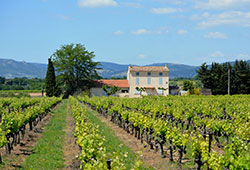
Photo by Ben Kerckx / Pixabay |
The birthplace of winemaking, France boasts a diverse array of wine regions, each with its unique character. Bordeaux, the cradle of fine red wines, produces legendary Cabernet Sauvignon and Merlot blends. Burgundy, home of Pinot Noir, is renowned for its elegant and complex wines. Champagne, the source of the world's most celebrated sparkling wines, is known for its intricate production methods. |
|
Italy
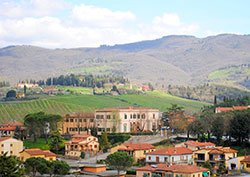 Photo by Ben Kerckx / Pixabay Photo by Ben Kerckx / Pixabay | Italy's winemaking heritage stretches back centuries, resulting in a vast array of styles and varieties. Tuscany, home of Chianti and Brunello di Montalcino, produces Sangiovese-based wines with intense cherry, plum, and tobacco notes. Piedmont, renowned for Barolo and Barbaresco, showcases Nebbiolo's aging potential, producing wines with dark fruit, leather, and spice notes. Veneto, home of Amarone and Valpolicella, crafts rich, full-bodied wines made from dried grapes. |
|
|
Spain
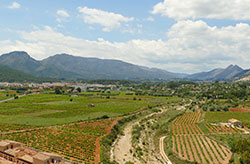 Photo by Ben Kerckx / Pixabay Photo by Ben Kerckx / Pixabay | Spain's wine regions offer a diverse range of styles, from fresh and fruity to rich and complex. Rioja, the country's premier red wine region, produces Tempranillo-based wines with flavors of cherry, plum, and vanilla. Ribera del Duero, known for its intense and age-worthy Tempranillo wines, showcases notes of blackberry, licorice, and cedar. Rías Baixas, renowned for its Albariño grape, produces crisp, aromatic white wines with flavors of citrus, peach, and minerality. |
| |
California
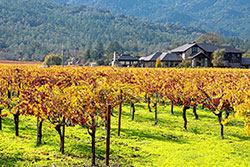 Photo by Ben Kerckx / Pixabay Photo by Ben Kerckx / Pixabay |
Napa Valley: Napa Valley is world-renowned for its Cabernet Sauvignon, but it also produces excellent Chardonnay, Merlot, Pinot Noir, and Sauvignon Blanc. Some of the most famous vineyards in Napa Valley include Opus One, Robert Mondavi Winery, and Rutherford Hill Winery. |
|
Sonoma County: Sonoma County is known for its Pinot Noir, Chardonnay, and Zinfandel. Some of the most famous vineyards in Sonoma County include Russian River Valley AVA, Alexander Valley AVA, and Dry Creek Valley AVA.
|
Oregon
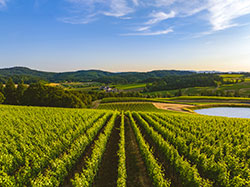 Photo by Ben Kerckx / Pixabay Photo by Ben Kerckx / Pixabay |
Willamette Valley: Willamette Valley is best known for its Pinot Noir, but it also produces excellent Chardonnay, Riesling, and Pinot Gris. Some of the most famous vineyards in Willamette Valley include Domaine Serene, Penfolds, and Willamette Valley Vineyards.
|
Washington
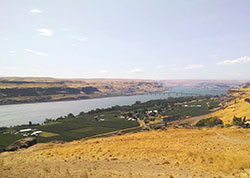 Photo by Don White / Pixabay Photo by Don White / Pixabay |
Columbia Valley: Columbia Valley is known for its Cabernet Sauvignon, Merlot, and Syrah. Some of the most famous vineyards in Columbia Valley include Chateau Ste. Michelle, Columbia Crest, and Woodinville Wine Cellars.
|
Wine Terms to Know
- AVA (American Viticultural Area): Imagine a special address for grapes! An AVA is a designated wine grape-growing region with specific growing conditions that influence the taste of the wine. Knowing the AVA on the label is like knowing a wine's hometown and the kind of flavors it might have, due to unique characteristics like climate and soil. Wine connoisseurs appreciate AVAs for the distinct qualities they impart to wines.
- Varietal: This refers to the specific grape variety used to make the wine. Common varietals include Cabernet Sauvignon, Chardonnay, Pinot Noir, Merlot, and Sauvignon Blanc. Knowing the varietal can give you a general idea of the wine's flavor profile.
- Tannin: Tannins are natural compounds found in grape skins, seeds, and stems. They contribute to the wine's dryness and astringency, often described as a puckering sensation. Red wines tend to have higher tannins than white wines.
- Acidity: This is the crispness or tartness of the wine. It plays a key role in balancing the sweetness and fruitiness, and contributes to a wine's freshness and ageability.
- Body: Describes the weight and texture of the wine in your mouth. It can range from light and delicate (like Pinot Noir) to full-bodied and rich (like Cabernet Sauvignon).
- Aroma/Bouquet: This refers to the smells you perceive when swirling the wine in your glass. Common aromas include fruits, flowers, spices, herbs, and earth. The aroma can offer clues about the grape varietal, aging, and production methods.
Understanding these basic terms will equip you to better navigate wine lists, engage in conversations about wine, and most importantly, appreciate the different characteristics of the wines you taste.
Wine Clubs Subscription Services:
Fortunately, you don't have to embark on globetrotting expeditions to savor the world's finest wines. Numerous online retailers and wine clubs offer convenient shipping options, ensuring that you can enjoy your favorite wines from the comfort of your home.
Here are some of the most popular wine clubs with subscription services:
- Wine.com: Wine.com has a wide variety of wines to choose from, including many high-end wines.
- Firstleaf: Firstleaf is a subscription service that uses a proprietary algorithm to select wines for you based on your preferences.
- SommSelect: SommSelect is a subscription service that offers wines hand-selected by sommeliers.
- Wine Club: Cellars Wine Club offers a variety of subscription options, including a focus on specific regions, varietals, or price points.
- Bright Cellars: Bright Cellars is a subscription service that uses a quiz to select wines for you based on your preferences.
- The Vine Club: The Vine Club offers a wide variety of wines from around the world.
- Wine Awesomeness: Wine Awesomeness offers a variety of wine subscriptions, including a subscription specifically for people who are new to wine.
Wine tasting, a hobby that enriches the mind and palate, offers a lifetime of learning and enjoyment. Embarking on this vinous journey provides an opportunity to connect with fellow enthusiasts, explore diverse cultures, and appreciate the finer things in life. And of course, its a good idea to check with your doctor to ensure if it is safe for you to consume wine or other alcohol beverage to avoid conflicts with your medication or other health risks.
We encourage you to enjoy wine tasting responsibly. Please be aware of the legal drinking age and consume alcohol in moderation. If you plan on visiting wineries, arrange safe transportation after tasting events (designated drivers, taxis, etc.). We are not responsible for any incidents related to drinking and driving. Additionally, some individuals may have allergies to wine or grapes. We recommend researching potential allergens before participating in wine tasting activities.
| |
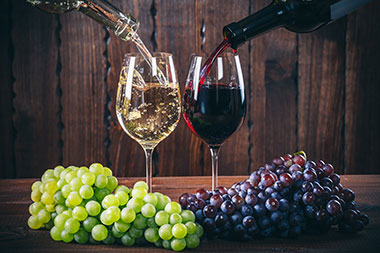 Photo by Ievgenii Meyer / Adobe Stock
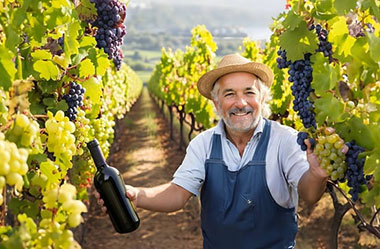 Photo by Alper Omer Esin / Pixabay
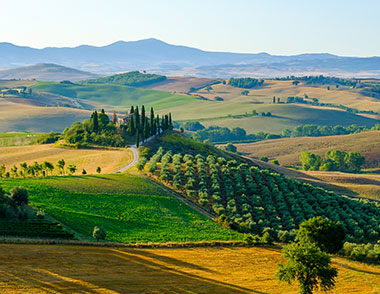 Photo by Anton Gvozdikov / Adobe Stock
|
 Photo by Ievgenii Meyer / Adobe Stock
Photo by Ievgenii Meyer / Adobe Stock Photo by Alper Omer Esin / Pixabay
Photo by Alper Omer Esin / Pixabay Photo by Anton Gvozdikov / Adobe Stock
Photo by Anton Gvozdikov / Adobe Stock